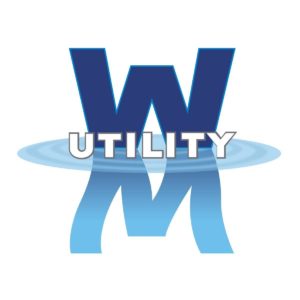
Water Utility Management: A Single Solution for Multiple Needs
INTRODUCTION
Water Utility Management (WUM), based in Savannah, Georgia, was founded in 1970 and is a family owned, private operator of over 200 community water systems and 20 wastewater facilities throughout Georgia. The water utility has been growing considerably over the past few years through a combination of plant construction, organic population growth, and new system acquisition. WUM currently serves over 26,000 customer accounts spread out over 14 counties and 3 distinct geographic regions. WUM is the largest privately-owned water utility in the state of Georgia and has an ambitious growth strategy to double accounts under management by 2025 without a commensurate increase in staffing. In order to accomplish this goal, WUM realized they would need to invest in automation and advanced digital technologies throughout their operations.
THE CHALLENGE
As WUM contemplated future growth, two areas of opportunity stood out. The first was to automate meter reading to help reduce operation costs, reach non-revenue water reduction goals, and increase customer satisfaction through real-time consumption data. Clearly an investment in Advanced Metering Infrastructure (AMI) would support these goals. The second area targeted for improvement was in service order efficiency. As a part of a regular performance evaluation, the team at WUM looked at Key Performance Indicators across their operations to identify areas that might benefit from improved processes or investments in new technology.
In late 2017, Ray Harrington, Director of Operations, and Chris Booker, Information Systems Manager, completed an evaluation which revealed that 80% of service orders were related to service connections or shut offs. These work orders were due to customers moving in and out, payment delinquencies, and reported system leaks. This was a surprising result, and Ray and Chris set out to identify a way to reduce their service order volume.
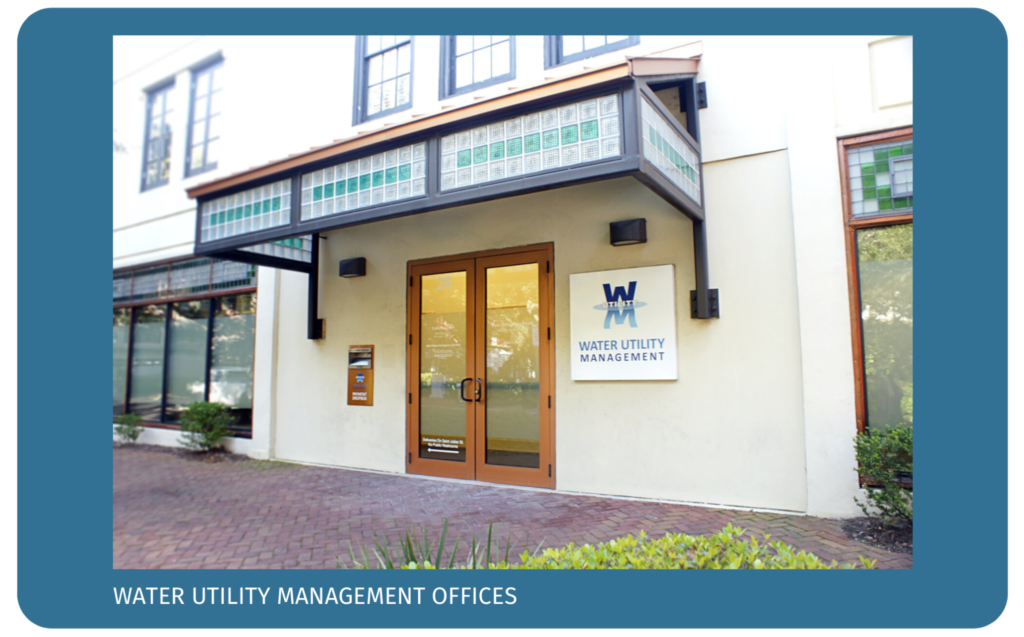
THE OPPORTUNITY
The team at WUM realized that if they were able to remotely enable and disable water services, the company would be able to potentially save upwards of $1M every year in service costs. This was a compelling business case to move forward with an investigation of technology solutions that could address the goals of implementing automated meter reading and remote valve control.
One of the challenges that immediately presented itself was the geographic distribution of the water system. Since WUM operates over a large region where meters may be several hours drive from each other, it was economically impractical to consider a proprietary fixed-wireless network solution for their AMI needs. The cost of collectors and towers to ensure network coverage for such a wide territory would be cost prohibitive. This meant that an AMI solution that took advantage of existing cellular networks such as AT&T would be the most viable choice.
A SURPRISING SOLUTION
As they began to investigate options that would meet their needs for both meter reading and valve control, the team at WUM had initial concerns about cellular network coverage and battery life. Their research led them to Smart Earth Technologies (SET) who, much to the surprise of Chris Booker, offered a cellular remote valve that simultaneously functioned as an AMI endpoint. This technology solution would solve both problems the utility was looking to address in a single device. After further engaging the team at SET, Chris learned that the newest generation of cellular radios used in SET devices, known as LTE-M, were designed for stationary, low power applications and could last as long as 20 years. In addition, AT&T had already deployed a national 5G network that supported these new radios and met WUM’s uptime requirements across the entire service area.
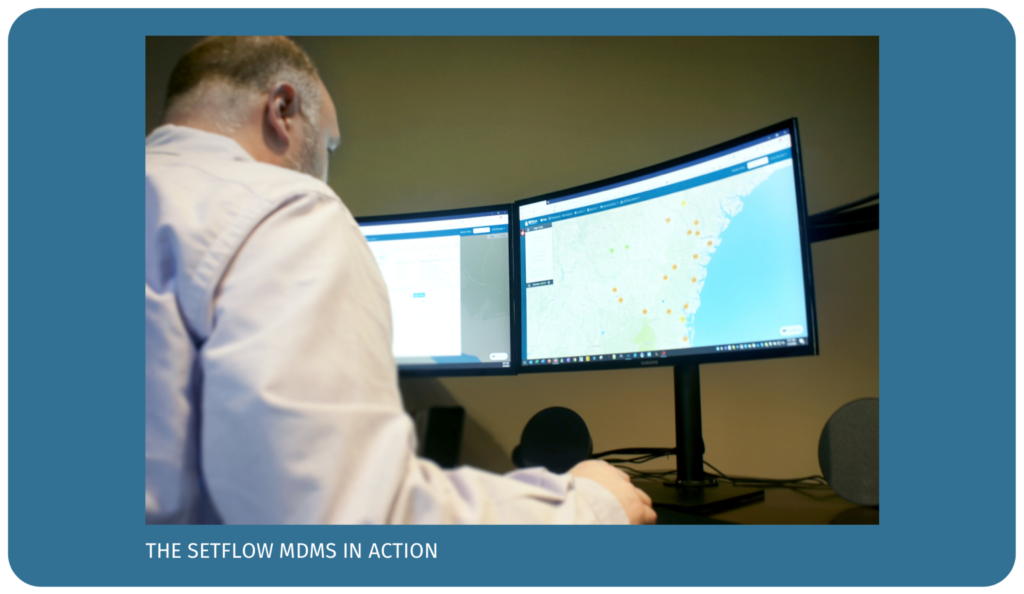
The discovery of the SET Remote Smart Valve was a revelation to Chris and the WUM team. Not only was this technology a perfect fit for the needs of the utility, but there were several other benefits of working with SET. First, the business model employed by SET offered the cellular AMI system along with remote valve control for a simple, one-time fee. All network and meter data management system fees came included with the cost of the Remote Smart Valves. Second, SET expressed a willingness to work directly with Chris and his team to enhance the reporting and analytics of the SETflow MDMS to meet the specific needs of WUM. This combination of convenience, cost, and flexibility made selecting SET as the vendor of choice an easy decision.
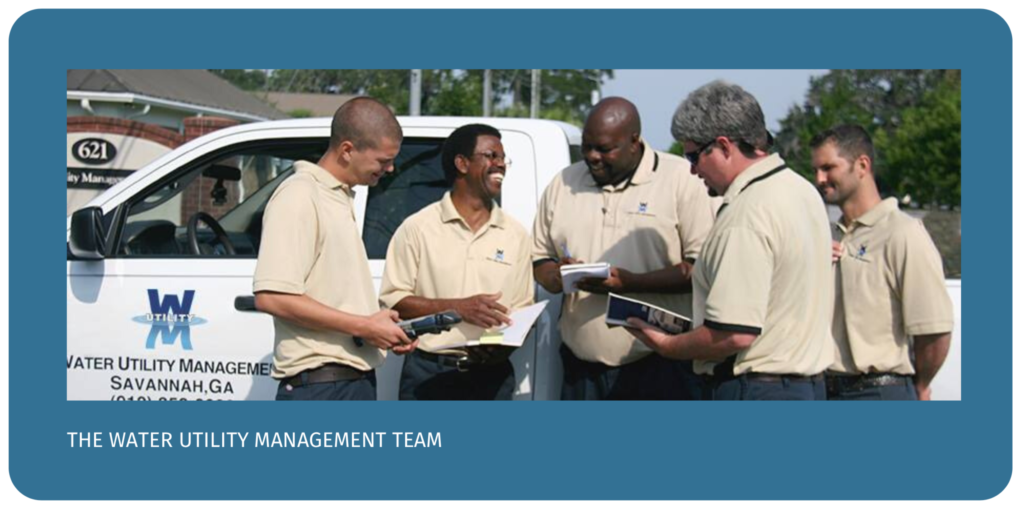
STRATEGIC ALIGNMENT THROUGH FLEXIBILITY
WUM also understood that the SET solution was a good fit for the long-term strategic goals of the water supplier. Chris Booker explained, “WUM is a family owned, private utility with ongoing expansion plans. The ability to expand our AMI system by simply adding new endpoint enabled remote valves brings the flexibility and cost certainty we are looking for.” Also, when evaluating the financial risks of acquiring a new system, the knowledge that WUM will have remote valve control to ensure reliable collections from water services gives the utility a greater degree of confidence that it will meet its growth goals.
The process of evaluating SET was much faster than is typically the case for a utility making a substantial capital investment. They began evaluating solutions in the fall of 2018 and had an active pilot with SET by Thanksgiving of that year.
Since there was no need to invest in any network infrastructure, the pilot was deployed quickly and inexpensively. By February of 2019 WUM had all the data they needed to make a decision and procure financing. The contract with SET was signed in May, less than 9 months after the project kick-off.
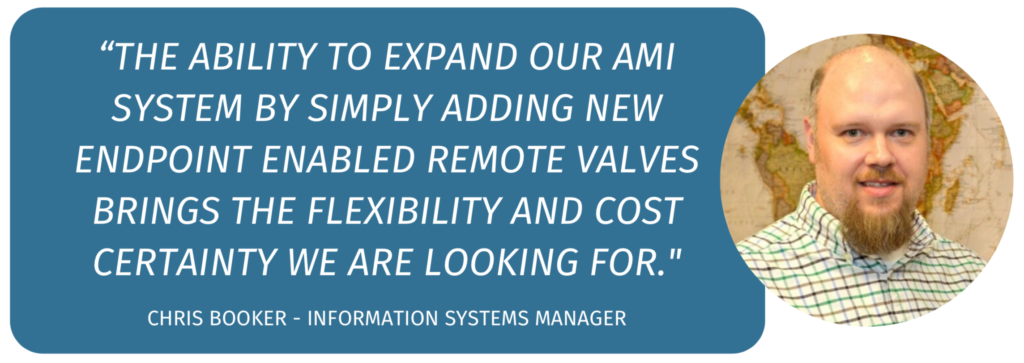
BENEFITING CUSTOMERS
On top of the obvious advantages that WUM receives from the new valve control and AMI system, the benefits to end-use customer are also a big part of the business case for making the investment. By providing customers with transparency into their water usage, they can better understand their bill and identify and repair costly leaks. This leads to improved customer satisfaction which drives down service costs and helps WUM keep water rates manageable for their rate payers.
As one older WUM team member ironically commented during the pilot phase of the project, “I’m not sure what I think of this new smart meter data. You can tell it’s my house because I get up in the middle of the night to pee!”
This virtuous cycle of system investment, cost reduction, and improved service ensures that WUM will remain a leader in the water utility space for decades to come. The utility is well on its way to achieve its goals, and by partnering with SET on a leading technology solution tailor fit for WUMs needs, all parties are reaping benefits from this exciting new technology.

